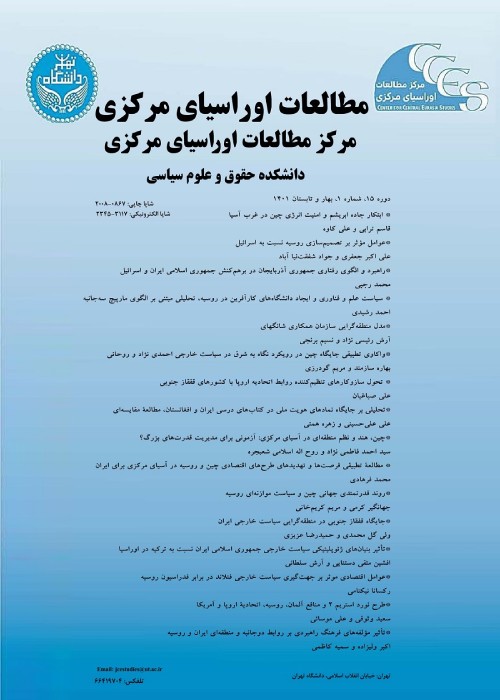Developing and Validating a Model of Foreign Relations between the Islamic Republic of Iran and the Azerbaijan Republic: Extraction of Risk, Critical, Strategic and Regulatory Variables
After the collapse of the Soviet Union, the South Caucasus became a battleground between regional powers and superpowers due to its rich energy resources, transit geopolitics, proximity to the Caspian Sea, and economic opportunities. This strategic importance for Iran was greater than the fact that the region affects Iran's regional security and provides many economic opportunities for the country that can help lift economic sanctions. Foreign relations between Iran and the Republic of Azerbaijan are more critical between these countries. Research on the relationship between countries suffers from methodological gaps and shortcomings. Thus, this study attempts to cover these weaknesses and develop and validate a model of relationships between the countries.
To achieve the objectives of the research, the following research questions have been developed: What are the main factors and variables of the structure of foreign relations between Iran and the Republic of Azerbaijan? What is the interaction and behavior of these variables in the system of bilateral relations and what is their nature?
According to the research questions and objectives, the following hypotheses are proposed:The developed model of Iran-Azerbaijan relations is a valid model that corresponds to environmental realities.The validated model shows an acceptable fit index in SPSS. The extracted variables can predict the future of foreign relations between the countries.
This study uses a multi-method, multi-step design that combines structural equation modeling (content analysis, exploratory factor analysis, and confirmatory factor analysis) in SPSS and interaction analysis in Mic Mac. In the first phase, a content analysis was carried out in which literature review, documentary research and semi-structured interviews with experts resulted in the extraction of 33 variables. Then confirmatory factor analysis was conducted and based on Eigen Value and Factor loading, 20 variables under five different factors were extracted and confirmed. In the second phase, a crossed impact analysis was done with experts in MicMac software according to which the behavior and nature of variables were identified and reported. The theoretical framework: The theoretical framework that guided the entire study from data collection to data analysis was the regional integrated security theory proposed and modified by Buzan and Waver (2003) Which is in stark contrast to traditional approaches in security studies and foreign relations because it has shifted attention from the global focus to the regional level. It has four main dimensions and covers the issues of border, polarity, anarchist structure, and social construction.
The data showed that the valid model of foreign relations between countries has five major dimensions that include economy, survival and stability, hegemony, legal and political, and socio-cultural dimensions with twenty different variables at least. Cross-impact analysis where the identified variables are divided into impact variables (critical and environmental variables), two-dimensional variables (risk and target variables), dependent variables, and independent variables (exceptional and secondary-leverage variables).
It was concluded that structural equation modeling could provide a robust and validated model of foreign relationships between Iran and Azerbaijan and explain these relations' direction and intensity in different dimensions. It was also concluded that the constructed model shows indicators of a good fit with the geopolitical realities of the South Caucasus. These findings obtained in the interaction analysis can be used as a valid input for scenario development and forecasting of foreign relations between countries.
- حق عضویت دریافتی صرف حمایت از نشریات عضو و نگهداری، تکمیل و توسعه مگیران میشود.
- پرداخت حق اشتراک و دانلود مقالات اجازه بازنشر آن در سایر رسانههای چاپی و دیجیتال را به کاربر نمیدهد.




